How to Reduce Returns in Ecommerce: 7 Best Practices

Shopify Returns Management Best Practices, Reduce Your Returns Rate
As business owners, problem-solvers, and innovators, we often encounter obstacles. At first, these are seemingly impossible to get a handle on, let alone complete control over.
Even the savviest and most experienced Shopify retailers feel powerless when they come to face one of the most menacing and rowdy problems known to the modern world.
We’re talking about the Shopify returns problem and how to reduce returns in ecommerce.
The Horrifying Reality of Shopify Returns & Exchanges
While reducing returns and exchanges may seem like an uncontrollable phenomenon, the truth of the matter is, retailers have the power to shape the magnitude of their returns and exchanges.
The quicker you realize this, the faster you can understand how your ecommerce return rate impacts all aspects of your business.
Front-End Costs of Product Returns:
Many retailers can pick up on the initial front-end costs of product returns, as they present the most immediate harm to your Shopify store.
Let’s take a look at the elemental damage a product return does to your ecommerce store:
- Cost of Refund: Lost sale and unhappy customer.
- Shipping Costs: When retailers offer free shipping and free returns to the customer, they invest in the customer by paying for transportation costs. This investment is lost when a product gets sent back to the retailer.
- Cost of Product Dispositions: When a product returns, it must be inspected and placed within one of several categories, ranging from resale to liquidation. When returned products face liquidation, they sell for much less than their original value.

As retailers look to reduce the immediate impacts of returns and exchanges, they begin to realize some critical problems with their process, which may include:
- Wasted Time: Retailers often deal with slow and manual workflows to process returns and exchanges.
- E-mailing consumers back and forth, gathering return instructions and information.
- Inspecting returned goods.
- Spending 20+ hours approving return authorization forms.
- Manually refunding return costs within Shopify.
- Inefficient methods of managing and tracking returned items.
- Assigning a product the correct disposition within your warehouse.
- Tracking the status of a returned item.
- Keeping up to date with developments.
- Difficult to manage and analyze records of returns and customers in a Google Doc or Excel workbook.
- Painful disconnects between the Shopify platform and retailer’s own returns process.
- Lack of detailed information as to why the product returns.
- Difficulty in identifying costly trends in products and customer behavior.
Not only do these problems waste a considerable amount of time, but they also take away from the relevance of an employee’s role within your company.
Let’s face it, handling returns and exchanges is not the primary function of your customer success team. It’s an additional task they take on to keep your store running.
Returns and exchanges steal time away from your team and force them to handle a tedious problem. However, they could be doing more meaningful and value-added tasks aligned with their skill sets.
“Why can’t I just hire a part-time employee to process my returns for me? That’ll save time, right?”
Not quite. That’s just plugging in holes to keep a sinking ship afloat.
Depending on your location and returns volume, you’re probably paying your employee a competitive wage of 15 dollars an hour to process and handle your returns and exchanges.
Additional staff support won’t magically prevent product returns or give you insight into why they’re happening in the first place. Instead, additional warehouse staff translates into other overhead costs.
Impact on the Customer Experience and Retention:
Returns hurt ecommerce growth by causing churn.
According to Kissmetrics, it’s 7x times more expensive to acquire new customers than to focus on the ones you already have.

If you’re running a fashion & apparel ecommerce brand, you’re most likely leveraging a few traditional avenues of customer acquisition:
- Paid Facebook or Instagram ads
- Search engine optimization
- Inbound/Content Marketing (blogs, videos, infographics, etc.)
- Influencer Marketing (Instagram models, fitness leaders, celebrities, etc.)
These strategies above are fast methods of attracting new customers for one-time purchases. The problem?
Online customer acquisition is expensive and typically delivers a variable ROI.
So, how do Shopify companies like Allbirds continue to grow at jaw-dropping rates?
These high-growth brands employ various customer retention strategies to keep their customers engaged, happy, and coming back for more.
As a result, brands like Allbirds can sky-rocket their ecommerce growth by converting one-time shoppers into repeat customers.
Running out of room for more @Allbirds. Guess it’s time for a shoe rack. #WeAreAllBirds pic.twitter.com/RfqidUw0en
— Mark Shields (@laebshade) August 28, 2017
Have enough pairs of Allbirds to go on 9 dates & not rewear a pair if anyone’s interested in a free meal so I can show them off
— Tony Quattropani (@YonyyQ14) August 21, 2017
If you can tap into the power of your current customer database, you can increase your direct revenue. Additionally, you can build a loyal following of customers that will ultimately promote your products and bring in new business.
Customer Churn, the Bottleneck of Ecommerce:
So, if customer acquisition costs are high, but customer retention is a viable method of increasing revenue— what’s stopping me from growing as fast as I can?
Two more words. Customer churn.
Many ecommerce professionals look at their churn rate to reveal valuable insights about their company’s growth and make predictions regarding customer behavior.
Churn harms a brand’s growth because it’s essentially working against your acquisition and retention efforts.

What Causes Churn?
Churn is often the result of negative online shopping experiences that cause customer hassle and friction.
Returns impact customer experience.
Many times, returns force the shopper to endure a process filled with friction and regret.
Product returns are a hassle for both the retailer and customer, so if you don’t take action to reduce returns, you’re ultimately losing out on loyal customers and the repeat profit they bring.
That’s precisely why it’s crucial to implement an effective returns management solution.
Impact on Brand Image:
Today’s online shopping experience encourages consumers to share their purchases and opinions on social channels.
With social media platforms like Instagram and Facebook bringing in increasing traffic and purchases to your store, a problematic product returns experience can quickly apply negative connotations to your brand.
Everything You Know is Wrong:
As ecommerce sales continue to grow at a rocketing rate, there is an emphasis placed on retailers to understand the purchasing habits and needs of the customer.
While developing buyer personas and audience targets is the staple of any great marketing strategy – prematurely identifying the profiles for customers likely to initiate a return moves retailers further away from solving their returns problem.
To protect themselves from being taken advantage of, retailers have developed generalized personas for “serial returners”.
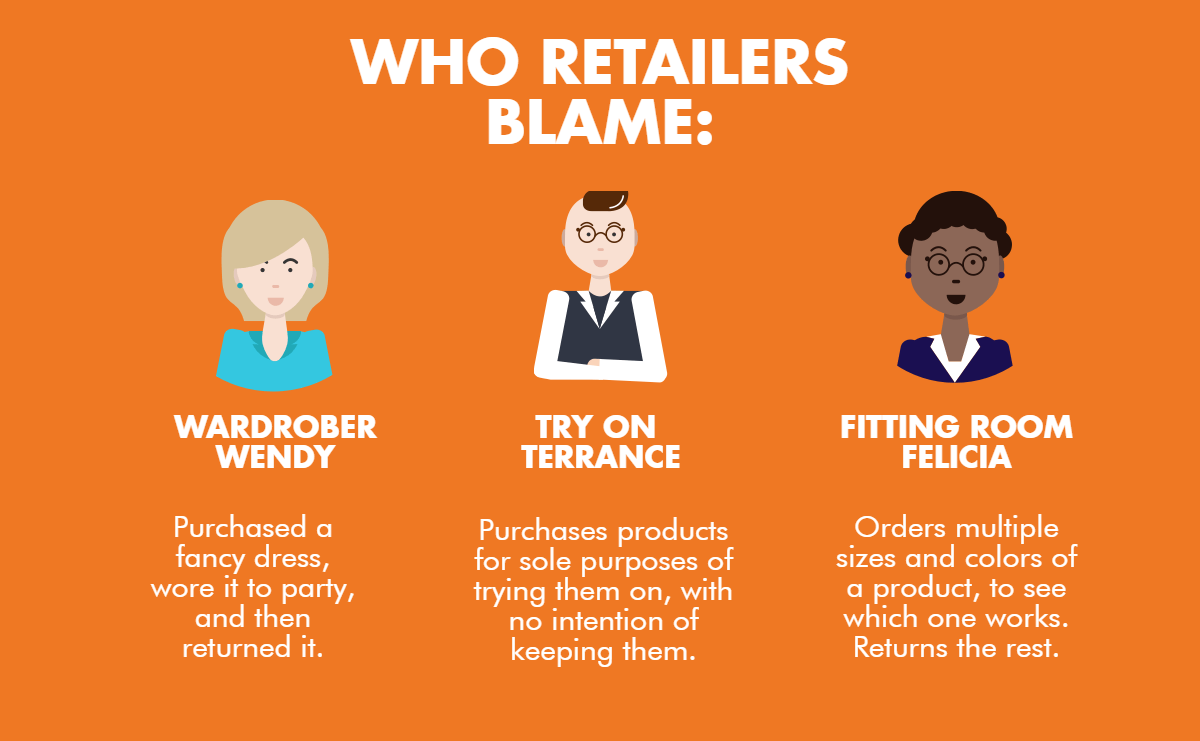
Although the “serial returner” personas exist and are harmful to your growing brand, they only account for a small percentage of product returns.
The key takeaway here is not that serial returner personas don’t exist but that they don’t accurately depict a store’s customer base and are not the root cause of a store’s high volume of returns and exchanges.
The majority of product returns are the retailer’s fault, not the customer’s.
Yes, you read that right; most of your store’s returns are your fault.
An estimated 65% of all returns are because of retailer fault. Below is a graph of three of the most common retailer faults that result in a return.

The data above depicts a somewhat vague segmentation of return reason codes, but keep in mind that these categories contain various subcategories.
Wrong Product Received Could Also Translate Into:
- Wrong color of the intended product
- Wrong size of the intended product
- Different product than intended.
Inaccurate Depiction Could Mean:
- Visuals (photos, videos, etc.) of the product did not correspond to the actual product.
- Sizing charts were inaccurate.
- Product descriptions were inaccurate.
The Silver Lining
Now that we’ve identified that the retailer is to blame for product returns, we now understand that the retailer, not the customer controls the behaviors and actions that lead to a return.
Simply put, the ball is in your court. You dictate the outcome of a purchase, and by following these seven best practices, you can start to crush your Shopify Return Rate.
7 Returns Prevention Best Practices:
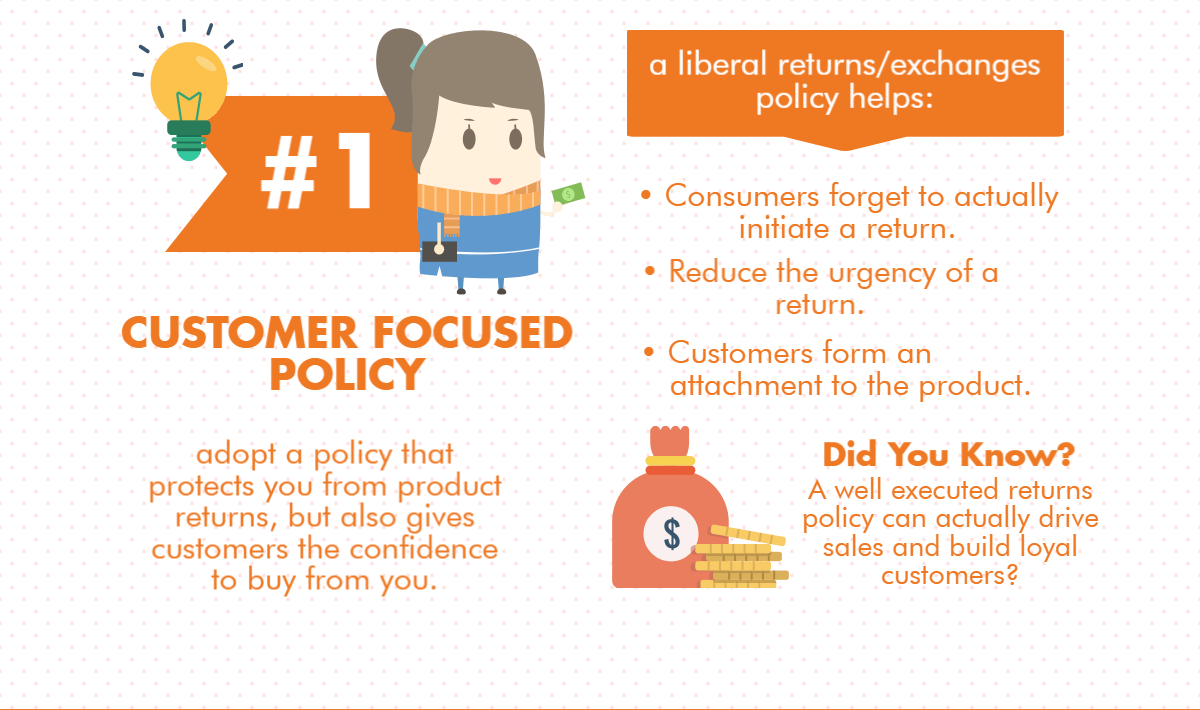
1. Adopting a Liberal Returns Policy
A liberal ecommerce returns policy, also sometimes called a customer-centric returns policy empowers the customer to purchase a product with confidence and peace of mind, knowing they have the option to return it later.
It may seem counterproductive to incorporate a liberal returns policy when you’re trying to lower reduce your product returns, but a customer-focused returns policy can actually help you prevent returns, and boost sales.
Here’s how:
Typically Shopify retailers allow customers to return a product within 28-30 days of purchase, this creates a sense of urgency and pressures customers to initiate the return quicker. Instead, retailers should lengthen their returns window to 45-90 days
Make sure to implement a policy that makes sense for your organization by looking at existing returns data to determine a logical time frame that applies the concepts above, but also protects against returns fraud.
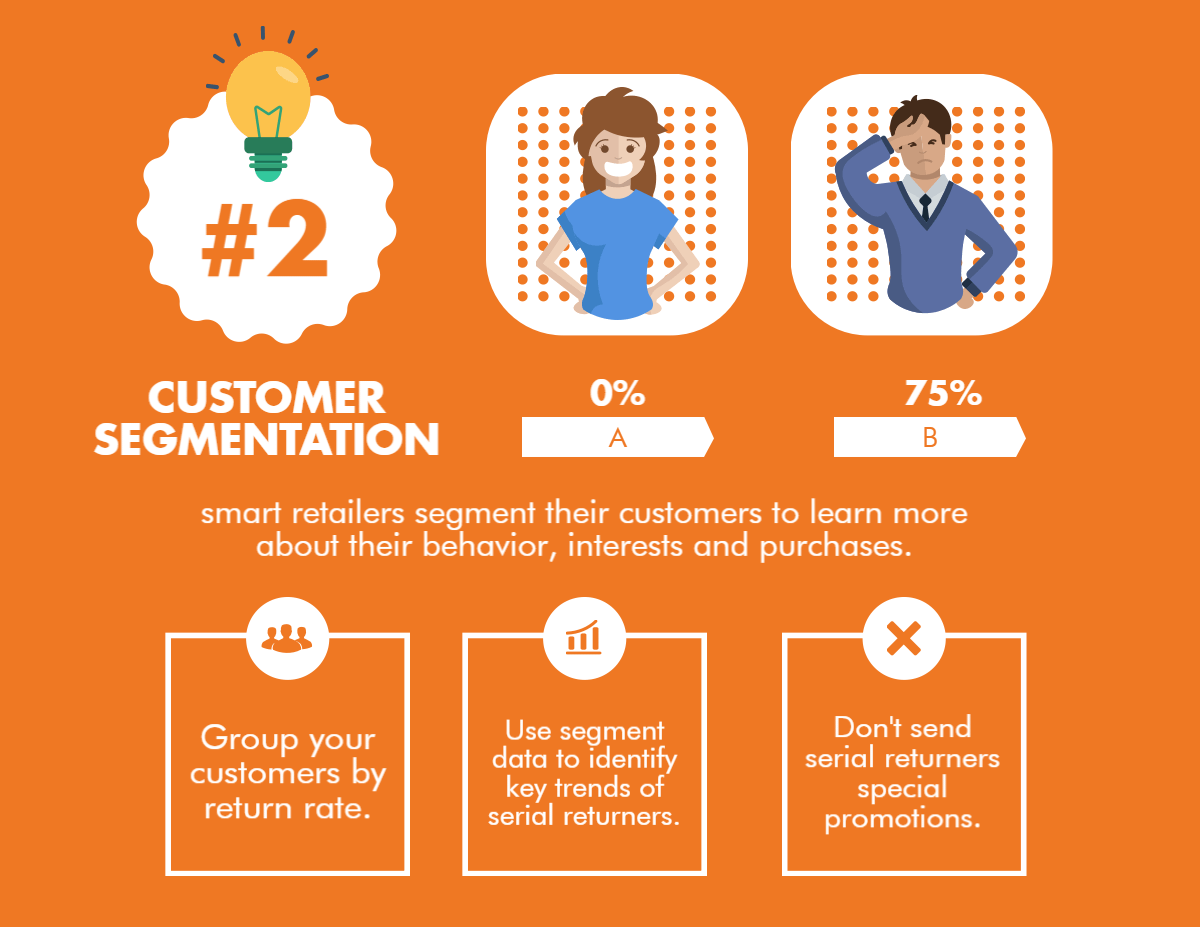
2. Segmenting Your Customer Database
Personas or traits developed by looking at careful considerations and analysis of your customer database are much more accurate than general depictions of high-risk customers.
Segmenting to prevent returns is not much different from segmenting for marketing purposes. At the rudimentary level, you’re just trying to identify trends, behaviors, traits, and other useful metrics to make smarter decisions moving forward.
The effectiveness of this strategy is dependent on the depth of metrics you’ve gathered and your overall returns and handling process.
Since Shopify doesn’t natively offer any analytics tools for retailers to keep track of product returns data, it’s critical that retailers optimize their spreadsheets and workflows to include key returns reason data.
Laying Out The Scenario:
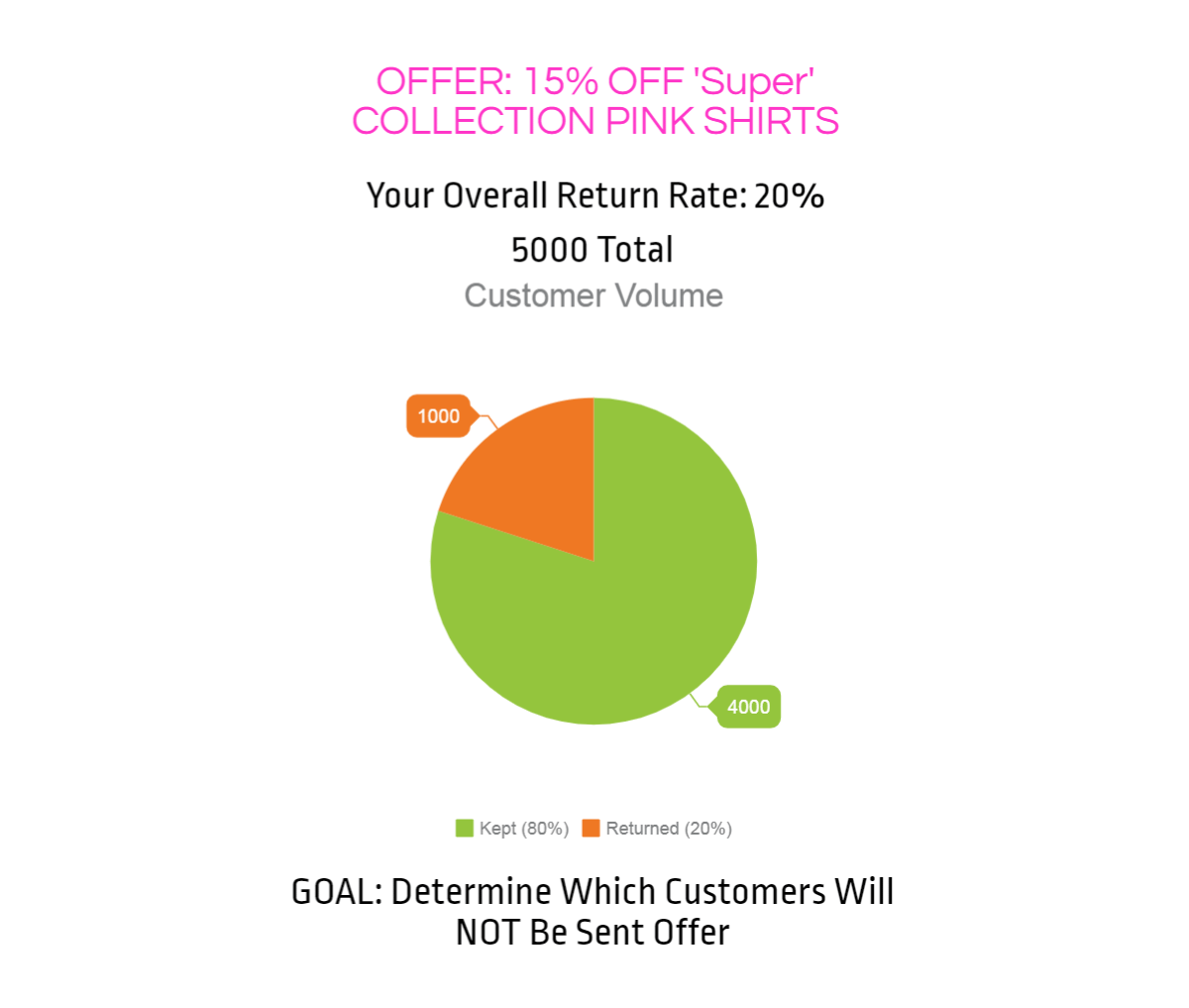
Let’s say a Shopify store is planning to launch a promotion for 20% off all pink shirts as a part of a campaign for breast cancer awareness but doesn’t want to risk sending this promotion to customers who have a high likelihood of returning the product.
Let’s see how you can apply basic segmentation practices to lower the return rate for your promotional campaign.
Start with identifying your target audience:
In this case, we want to segment our customers into two groups:
- Customers that will receive the promotional offer (A)
- Customers that will not receive the promotional offer (B)
Looking at the numbers, there are a total of 5,000 customers— who have purchased at least one product, and the store’s return percentage is 20%, which translates into 1,000 customers who have returned a product.
At first glance, it looks like the store should e-mail 80% of its customer base, and ignore those who have returned a product.
While this solution may be apparent, it’s not an ideal option for retailers looking to convert dissatisfied customers into repeat buyers.
The objective of this promotion is to encourage sales— the purpose of segmentation is to reduce the potentially high volume of returns, and the financial and opportunity (time and resources) cost they may bring.
To identify group B, we need to further analyze the 1,000 customers who have completed a product return:
While you may not have advanced metrics and data recorded for each product in your excel sheets, at the bare minimum, when retailers are transferring info from RMAs, details regarding the type of product are usually retained.
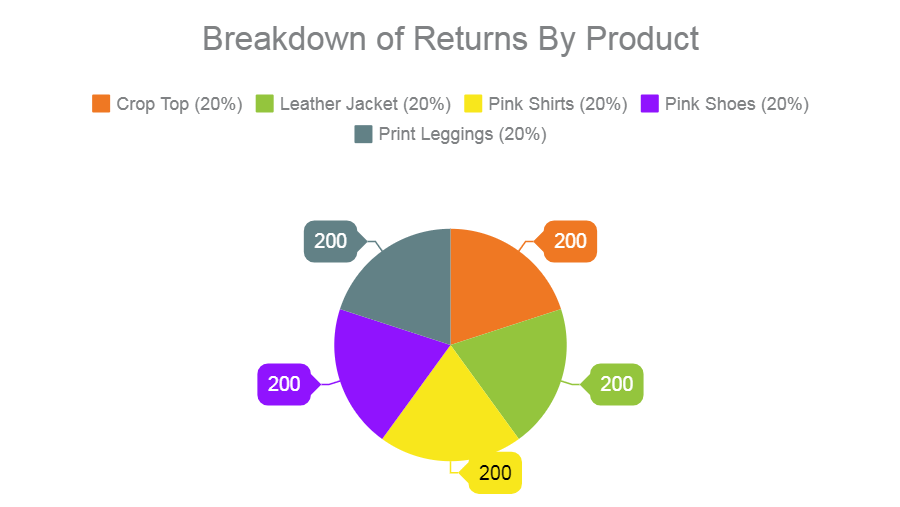
Keeping the numbers simple, it appears each product contributed 20% to the overall return rate, we’re getting closer but this data still isn’t as helpful.
Let’s break this data down even further to identify the returns reasons for why a product was returned.
Pink shirts are the exact product that the retailer is offering a discount on, so exploring the data for pink shirts specifically will provide some clearer insights.
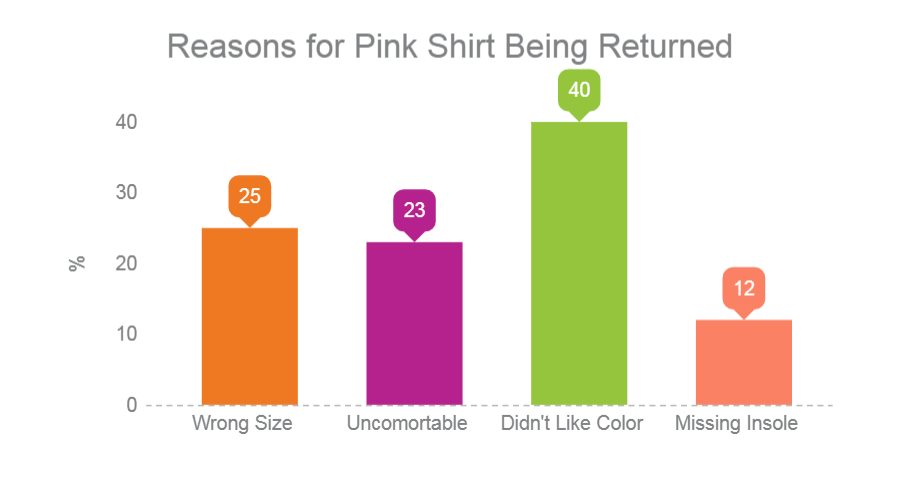
The original promotion involved customers receiving 20% off purchases involving Pink Shirts. Our latest findings show that of the 200 people who ordered a pink shirt, 80 of them didn’t even like the color.
Does this mean, we’ve found our group B to remove from the overall sample?
In this case of a very specific and isolated example, yes.
Using Segment Returns Data to Find Relevance:
Now that we’ve identified the segment to be removed from our promo mailing list, we need to verify that our data is relevant because the correlation between two occurrences doesn’t mean that there is causation.
The final step is to compare the Pink shirts that are being discounted, with those that have been returned, while taking into account the original return reason— did not like color.
Validate the segment by asking yourself questions like:
- Are the two product groups very similar in color?
- If customers returning this item are doing so because they didn’t like the color?
- Are the product descriptions and images for the promoted items accurate?
- And if the same customer orders the discounted product, are they likely to return it for the same reason?
In this simplified example, segmenting two groups, and sending only one group an offer allowed us to avoid 80 costly and time-consuming returns.
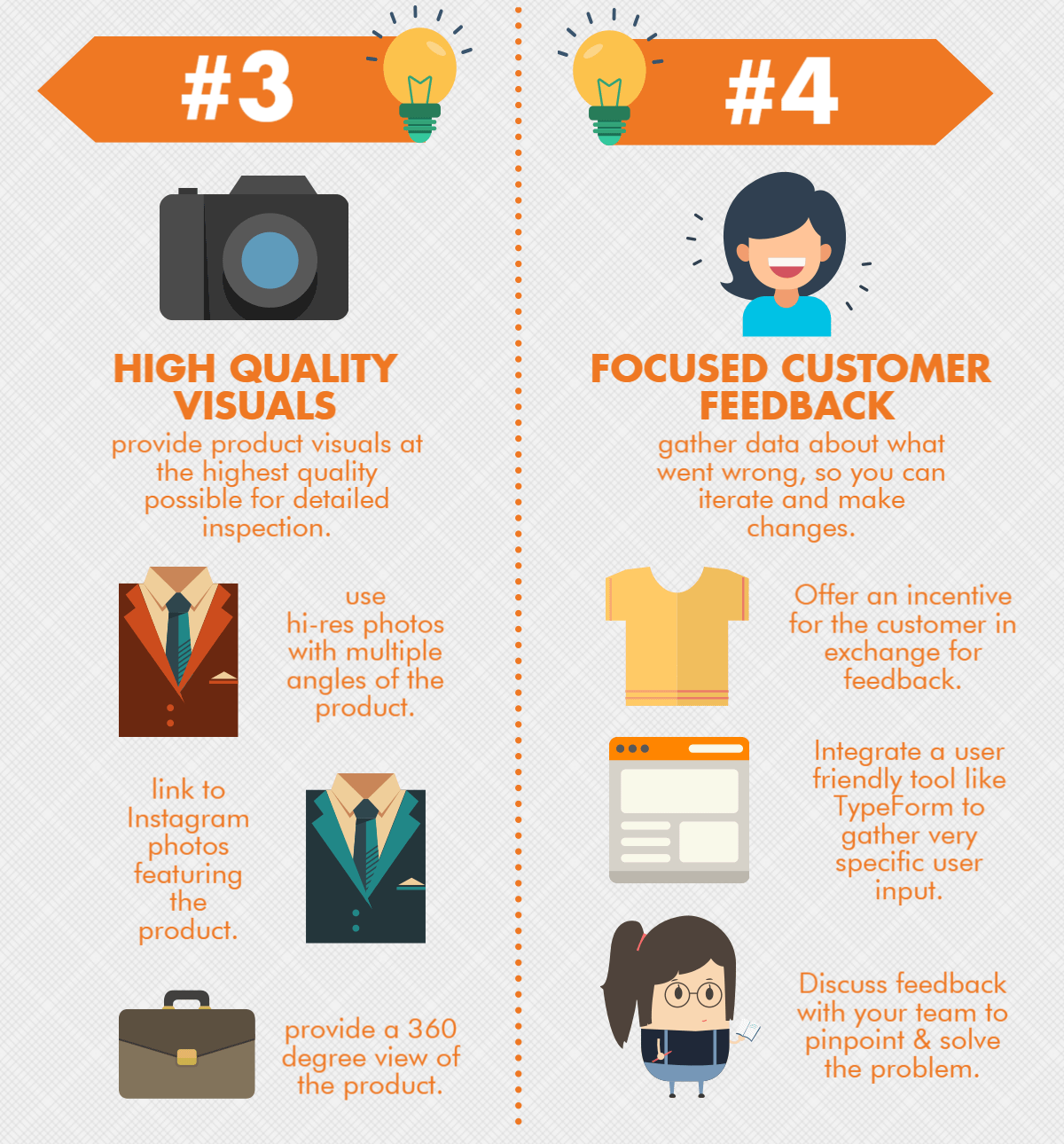
3. Incorporating High-Quality Visuals
Considering that 23% of product returns are because of inaccurate depictions of the product, high-quality visuals that provide detailed views of items become crucial to bridge the gap between the consumer’s expectations and the reality of the product.
The Problem With Shopping Online:
One of the pitfalls of doing business online is the lack of touch and focused examination that customers have access to while shopping in brick and mortar stores.
The simplest way to combat this obstacle is to provide extremely detailed photos of your product.
Hi-resolution photos allow customers to zoom in and examine the product with a fine-tooth comb.
People are selective (weird) creatures, they’ll return a dress because its stitching doesn’t match the color of the lettering on the welcome mat outside.
Although this example may be on the extreme side of customer returns, it serves to highlight a fault in the way many Shopify retailers present their products.
Lack of detail leads to a lack of information— which translates into a misinformed purchase decision:
You should aim to empower your consumers with as much relevant information as possible about a product so they can take a holistic decision based on realistic expectations.
The last thing you want is a customer sending you a $300 pair of pants back because they didn’t like the imprints on the button.
GymShark is a perfect example of a Shopify store that leverages high-resolution images to give buyers detailed information about a product before they make a purchasing decision.
In this example, the customer can clearly see details like stitching, product material, and logo from various angles.
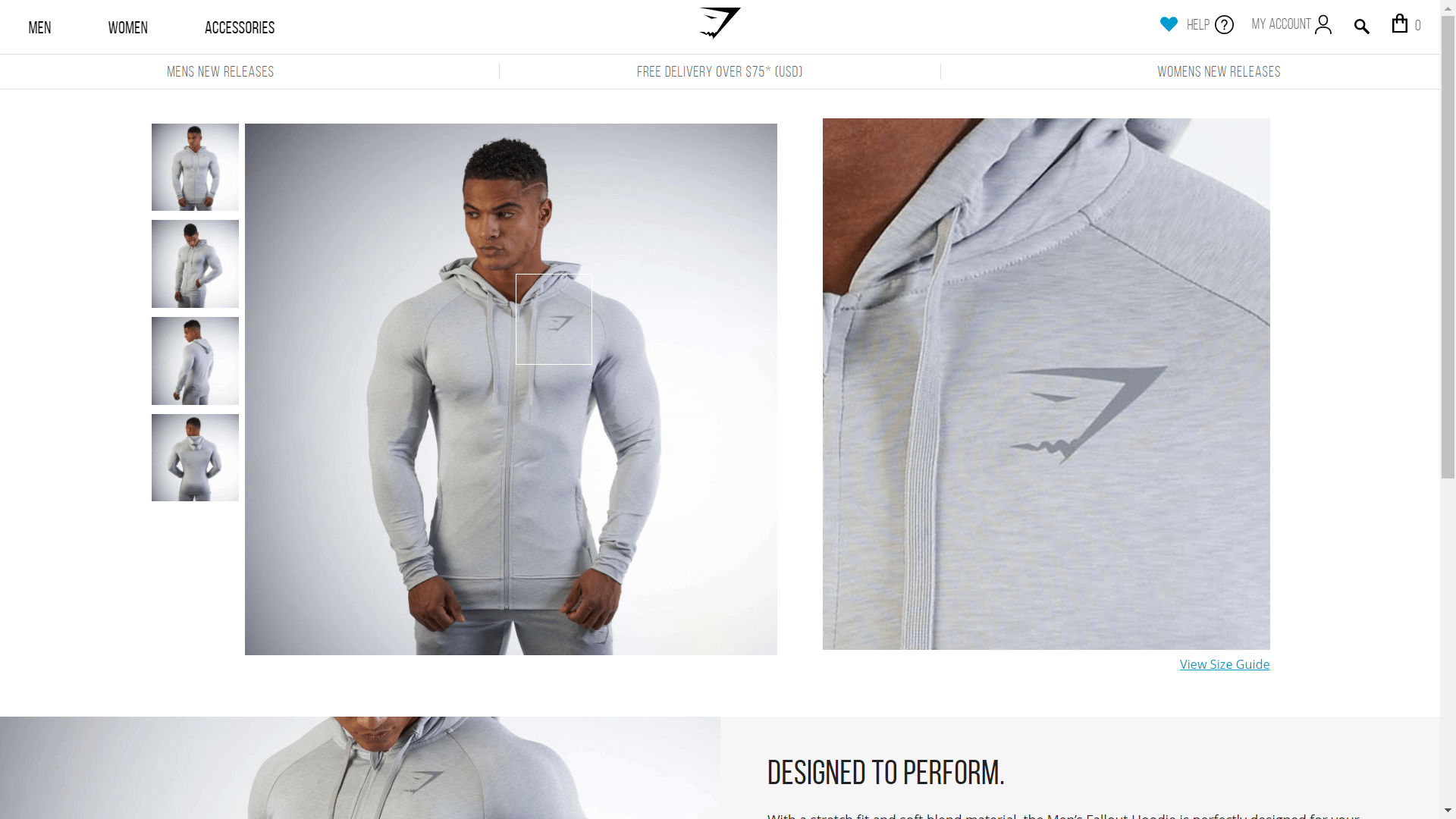
Incorporate photos of the product without any model or obstructions. Allow your customers to see what the product itself looks like.
House of Holland, another Shopify retailer, illustrates this strategy:
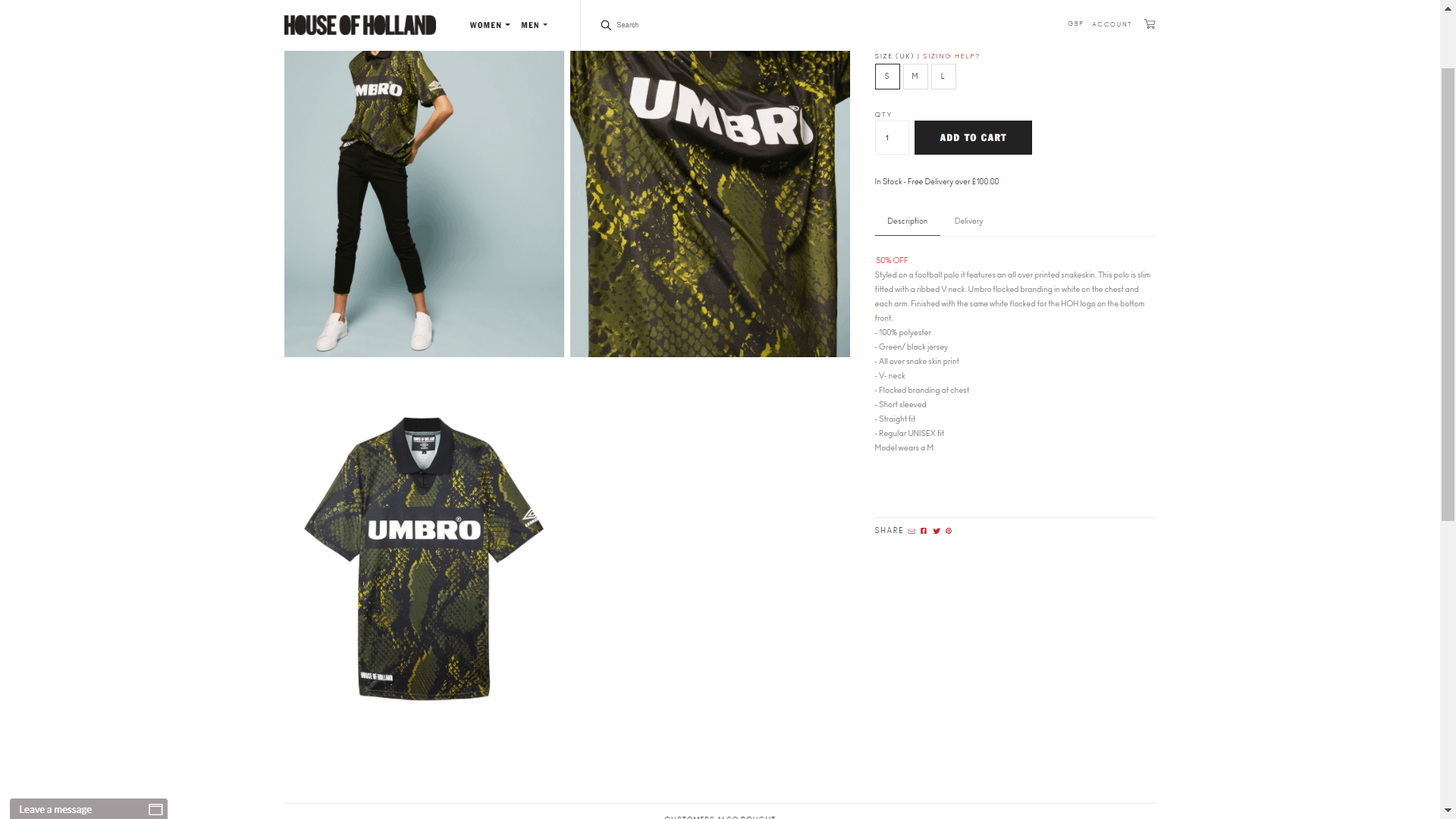
Provide 360 Degree Views:
With the help of Shopify plugins like Imajize and some photographic skills, retailers can quickly incorporate full 360-degree views of their products.
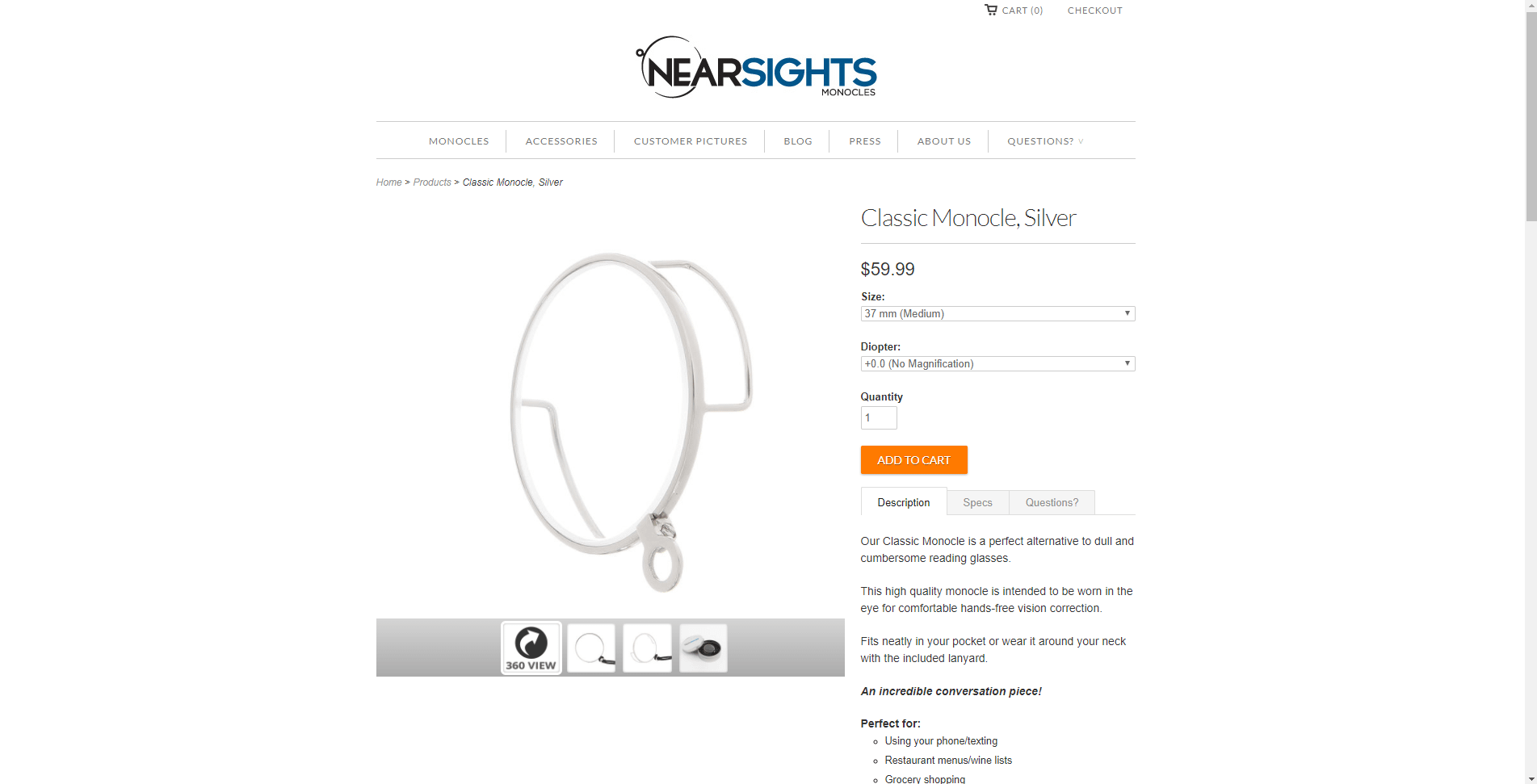
This approach to displaying a product is very effective, according to the testimony of a high volume Shopify retailer who used 360-degree views of products to give customers a better idea of what they’re purchasing. With this strategy in place, Camp4 was able to successfully reduce its return rate.
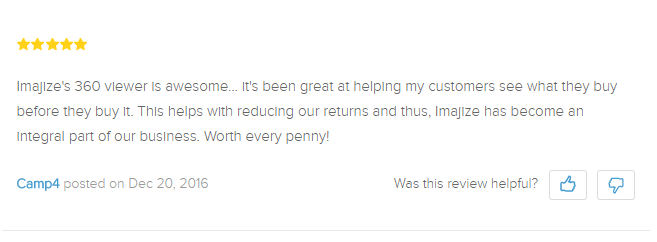
Incorporate Instagram Photos on Your Product Page:
Not only does including user Instagram photos of your product boost sales, but it also compels customers to keep the products they’ve purchased.
Instagram photos create realistic expectations:
Thanks to vanity sizing charts and various social norms, it’s become harder for consumers to accurately envision how a product will fit and look on them.
To offset the lack of realistic consumer expectations, incorporate an Instagram gallery for each product.
Showcase average consumers wearing and styling your product. This will aid in the buyer’s perception of the product, and help create more realistic expectations.
Instagram photos reaffirm purchases:
Along with some customer photos of products, make sure to feature any photos of influencers styling your product.
Fashion influencers carry a lot of weight when it comes to a consumer’s perception of a product, so a featured photo of a fitness phenomenon or Instagram model can help buyers come to terms with their purchase.
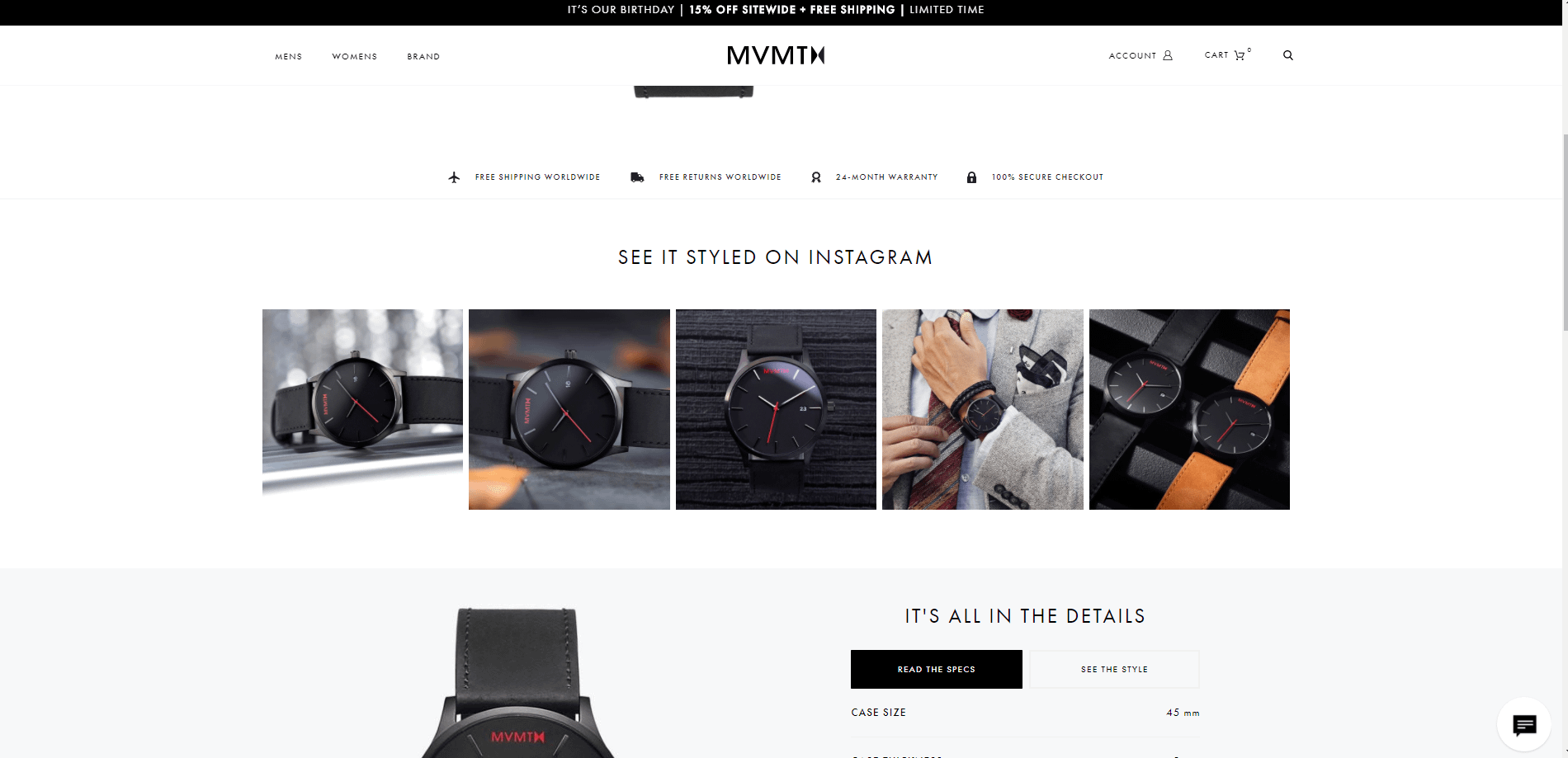
4. Customer Feedback and Hassle-Free Returns
Gathering feedback for a product return can be a tedious process, both for the retailer and customer, but nevertheless, relevant customer feedback allows retailers to improve the overall brand experience and understand various defects in their returns management process.
By collecting customer feedback from product returns, retailers are unlocking valuable insight into their products. Insights, which otherwise would not have been discovered.
Two Birds One Survey:
Admittedly, captivating the customer’s attention after a poor returns experience is not the easiest of tasks to accomplish, which is why retailers need to quickly gather feedback while the customer is submitting the return.
Since Shopify doesn’t offer any solution to easily process product returns and exchanges, thousands of successful Shopify retailers have to resort to clunky and inefficient methods such as manual e-mail and google docs.
Many Shopify stores have a process for dealing with returns and exchanges very similar to the one below:
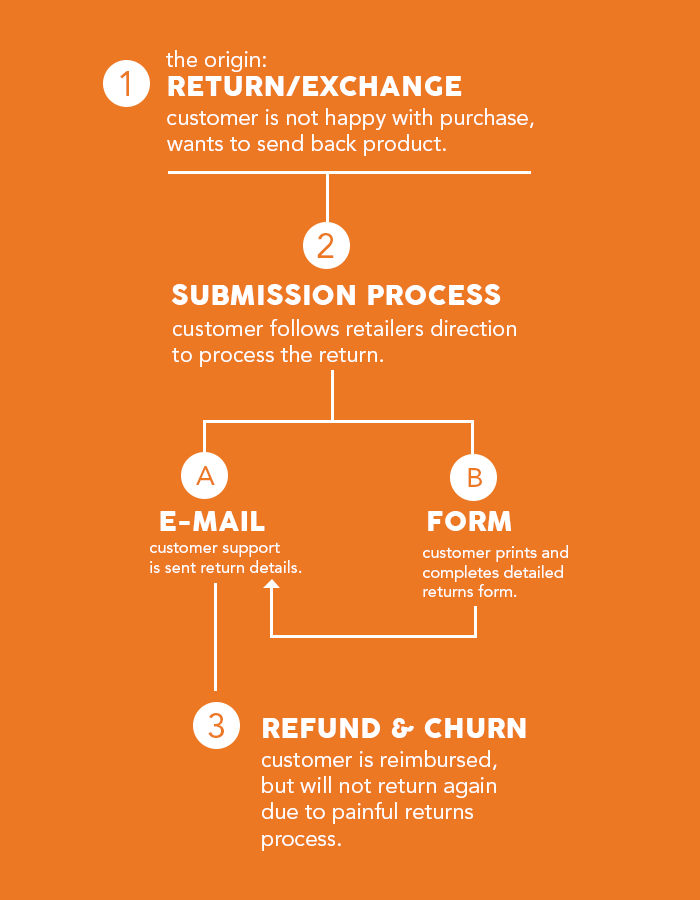
The consumer is forced to go through a very manual process that’s full of friction, and ultimately decides to not purchase with the retailer in the future.
As the retailer attempts to make this process as quick as possible, visibility into returns reason codes is lost.
So, what’s the quickest way to gather customer feedback, while also simplifying the Shopify returns process?
The best way is through a returns portal, which acts as both a returns creation tool for the customer and a data collection tool for the retailer. Even better, a returns portal can automatically enforce your return policy.
Free user input tools like TypeForm make it easy for retailers to quickly initiate the returns process by gathering necessary return details, while also collecting data on why a product was returned.
Here’s an example of how successful Shopify retailer, Southern Marsh integrated a free and easy tool to collect user feedback and simplified their Shopify returns process.
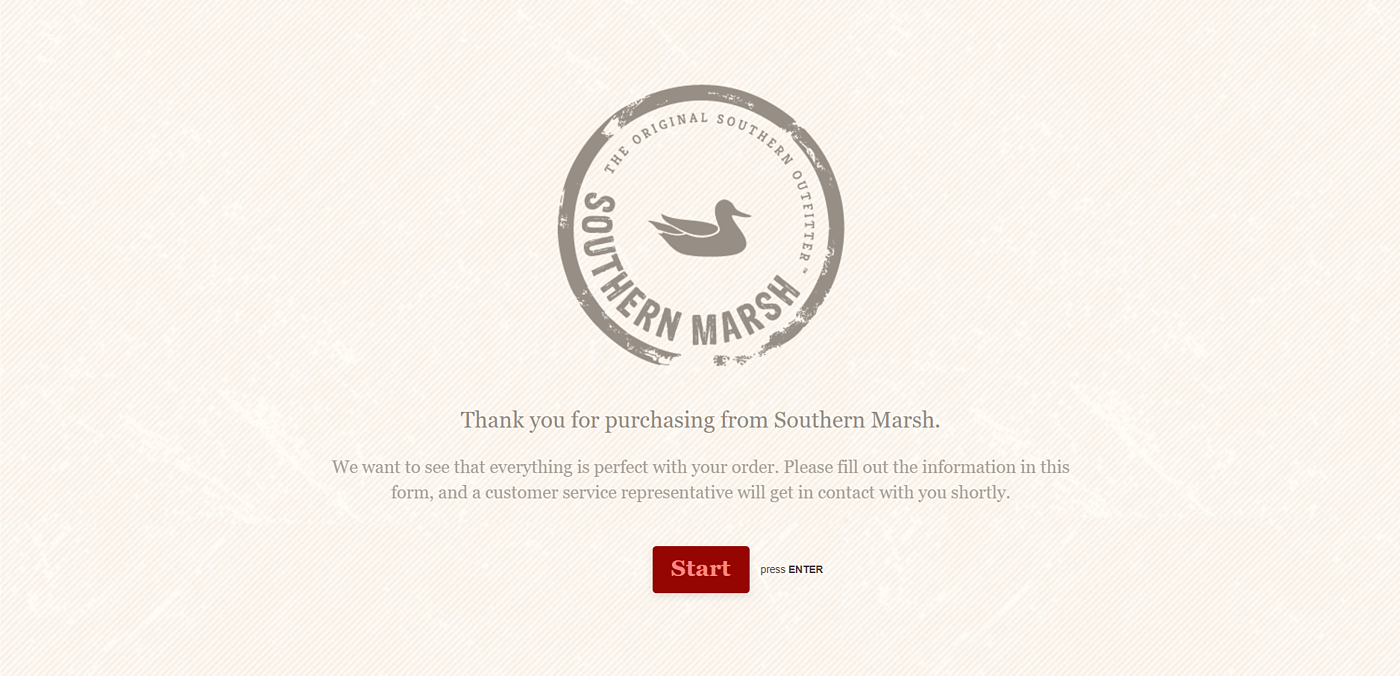
By using a third-party tool, or even asking your development team to set up a form, you can quickly gather necessary return codes, and user feedback while the customer is submitting the return.
Check out this example of another Shopify retailer, Julie Lamb NY, gathering return reasons codes and customer feedback during the return submission process.
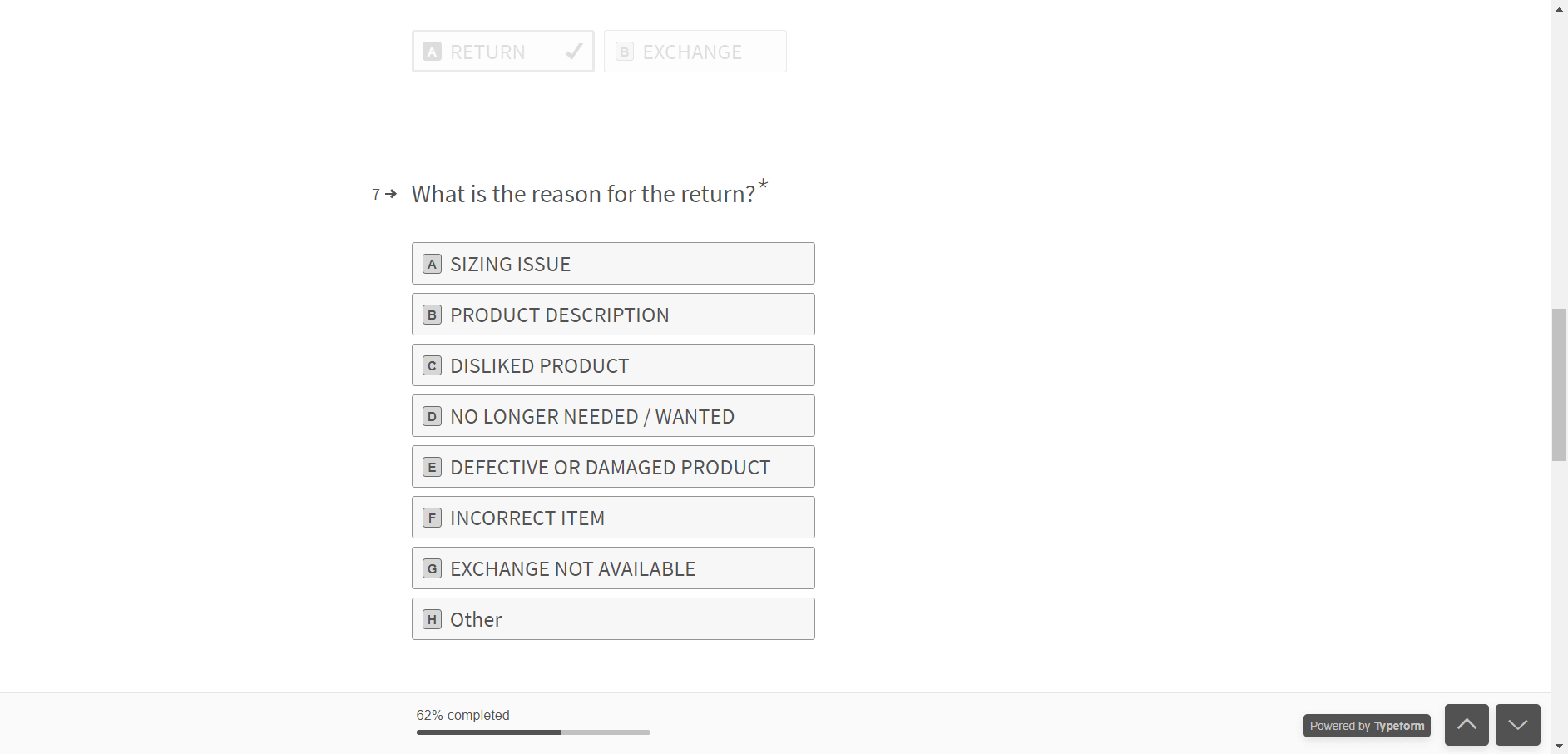
Using Customer Feedback:
Retailers have access to a diverse arsenal of techniques for acquiring customer feedback, but, regardless of which methods they choose, it’s important that they use returns data to discover problems with products and processes.
To start to leverage your returns reason codes:
Aggregate your customer feedback, and break it down into various variable groups that will help you better understand your customers
These variables can include return reason codes, type of product returned, the manufacturer of the product, product attributes, etc.
Analyze the various variables you collect and find common factors between products.
Explore deeper into the specifics of each return reason code, and attempt to pinpoint the cause of the problem.
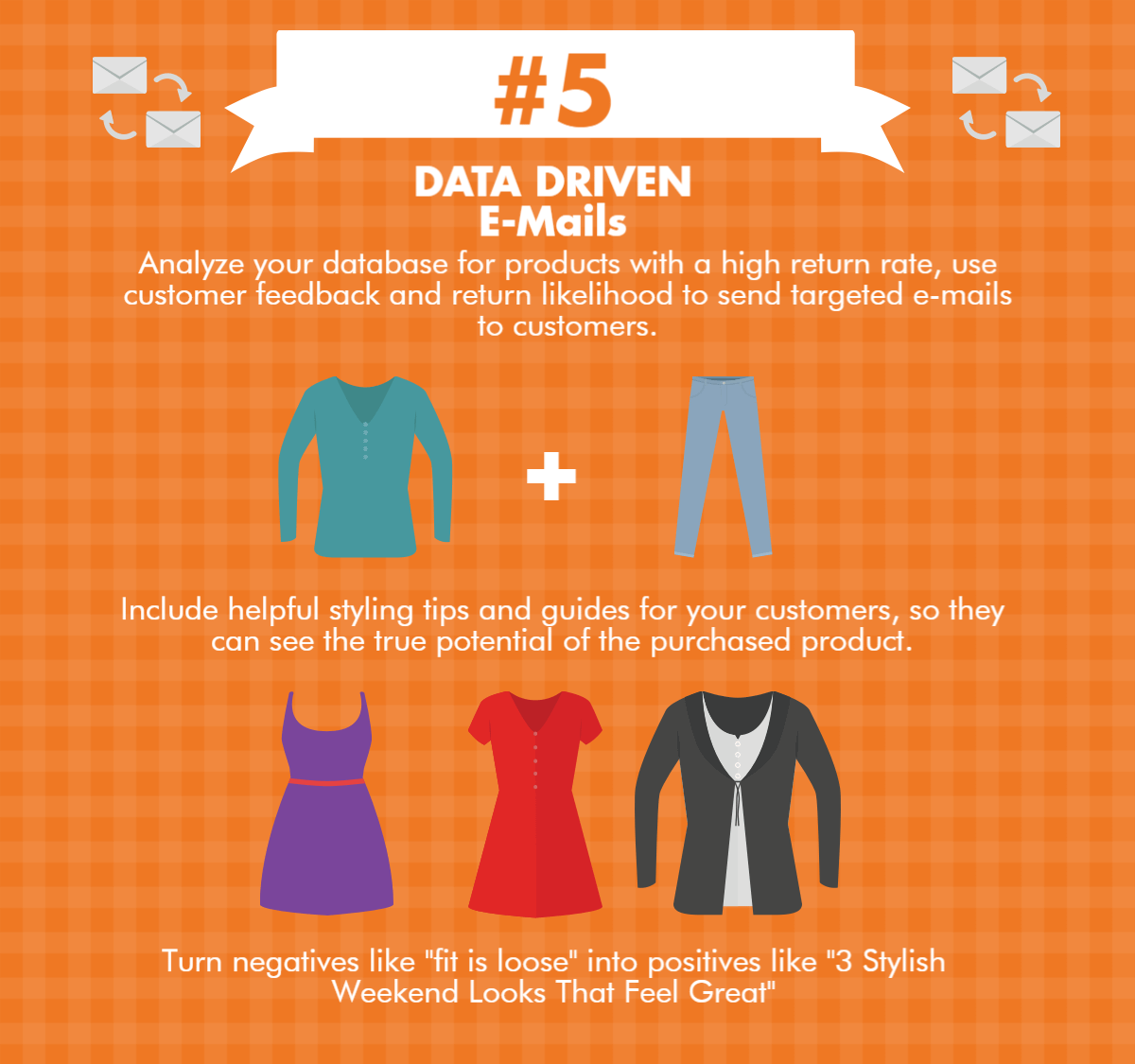
5. Data-Driven e-Mails to Prevent Returns:
Your marketing team and operations team are fighting the same war and should complement each other.
Having your marketing and sales team provide air support for your operations and logistics team is a good formula for increased productivity, profit, and reduced churn and hassle.
Using customer feedback and segment data, you can better identify which products are problematic and which customers are likely to return certain items:
Identify Problematic Products:
By analyzing customer feedback, retailers can gain a better understanding of why certain products are being returned.
Identify Problematic Customers:
Use customer segmentation and customer feedback to build tailored profiles for high-risk customers.
Supply this knowledge to your marketing team, so they know which customers and products to target.
Each time a product with a high return rate is purchased or a customer with a high return history completes a transaction, send them a focused e-mail.
Identify the faults in your product through returns reason codes and customer data:
For instance, if a customer orders a red coat, and you’ve identified through user feedback and return reason codes that this coat runs slightly small, gather or create content that highlights slim-fitting red coats.
Send the content you’ve curated or created, to the customer, with a message along the lines of:
“Hi, Name: Thanks for purchasing our Crimson Red Coat! Check out how these 7 celebs are rocking the fitted ‘tight is right’ look this fall.”
This concept incorporates cold hard data with some human psychology and clever content marketing to retarget your buyers through e-mail to re-affirm confidence in their purchase and helps lower the likelihood of a product return.
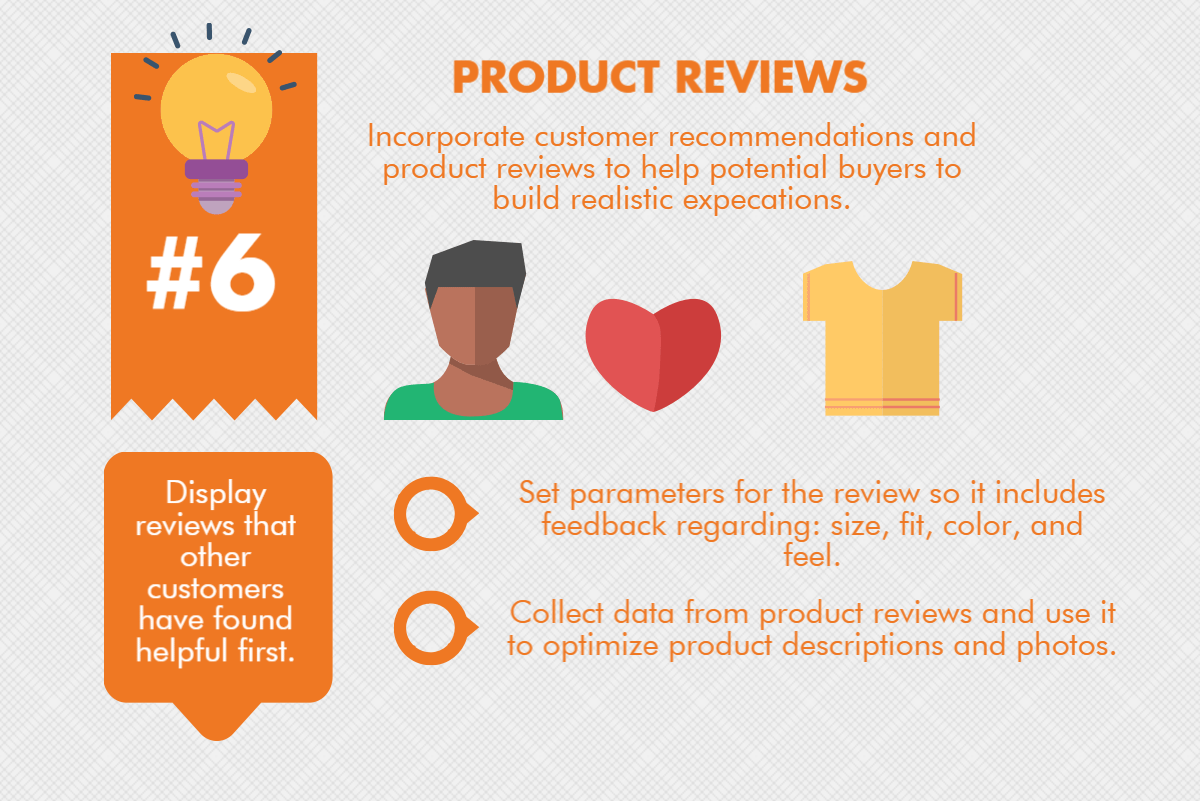
6. Incorporating Customer Reviews:
Product reviews provide both considerable SEO and sales benefits for ecommerce retailers, but let’s not forget that they also help reduce product returns.
Product reviews empower customers to make better, more well-informed decisions, which ultimately lead to fewer regrets.
Incorporating product reviews is such an effective returns prevention strategy that PetCo reported that products with customer reviews had a 20.3% lower return rate than those that didn’t.
Why Customer Reviews Work to Reduce Returns:
Researchers at Boston University recently conducted a study that examined the impact of product reviews on returns, they used the following key factors in their analytical modeling:
- Valence (the perceived positive or negative psychological value a person assigns something) of the product reviews.
- The precision of the review (the review volume, or the total number of reviews).
- The perceived cost of the return.
- Researchers accurately predicted that the valence of the product reviews was an effective indicator of quality, and that products with average higher ratings resulted in not only higher sales, but also lower returns.
Higher rated reviews also correlated positively with high precision.
Despite the findings for high precision and high rated reviews, products with a variance in their ratings resulted in unclear signals of product quality for consumers, which resulted in higher results.
So it’s important that most of your reviews indicate a strong overall (hopefully positive) trend.
The Key Takeaway:
Retailers should work to implement product reviews for each of their products, and encourage customers to provide accurate and insightful product reviews.
Retailers should also consider implementing a user voting system, where customers can vote on helpful reviews, as that will increase the valence of the information, and result in a stronger perception of product quality.
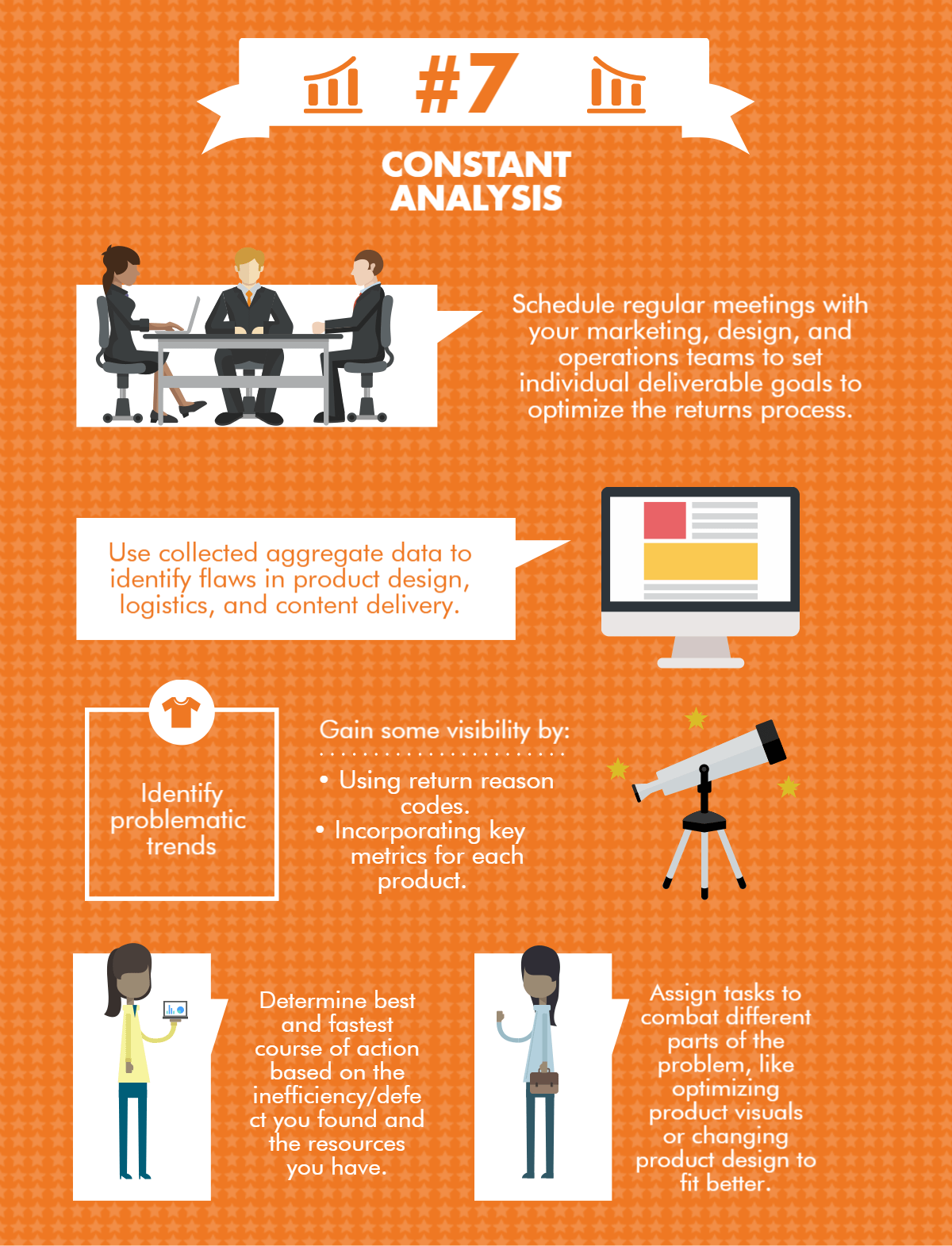
7. Constant Analysis and Team Incorporation:
Although returns are a bitter pill to swallow, ultimately— they provide retailers a complete view of their customers, processes, and products.
One of the primary realizations retailers have when they start to think of ways to reduce the volume of their product returns, is how important customer metrics and data can be.
Learning as much as you possibly can about your returns and exchanges process, in the top to bottom manner will arm you with the knowledge to make better business decisions.
This is why the final best practice for Shopify retailers is to make returns prevention an organization goal, which encapsulates members from all areas of your team, including:
- Marketing
- Customer Success
- Product/Design
- Operations/Logistics
By applying the data-driven practices at an organization level, retailers are able to fine-tune a process that will yield minimal returns.

To maximize the impact of these strategies, schedule regular meetings with relevant team members and assign focused tasks and objectives, that incorporate into your returns prevention plan in a meaningful way.



